HFA Audio Setup History 33 – Invaluable Advice – 2021-2024
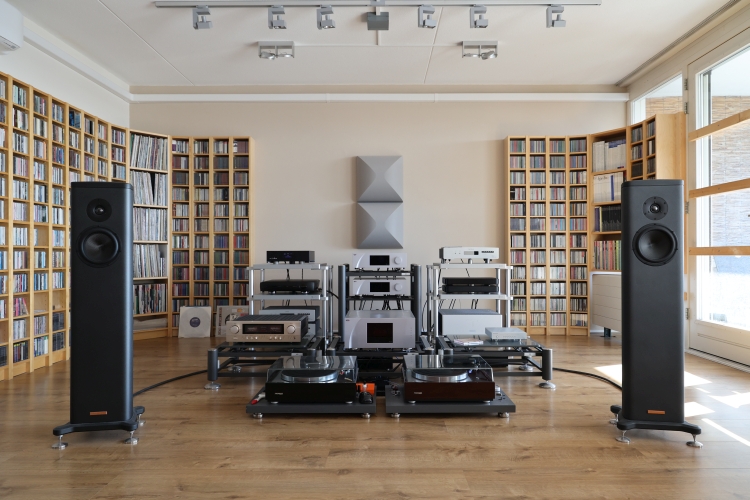
Fair warning: For the longest time, I have been too busy to work on these “HFA History” updates. With three years to cover, this update is going to be a very big one!
Let’s rewind…. After switching from Martin Logan to Magico, this is what the main listening room looked like in 2021.
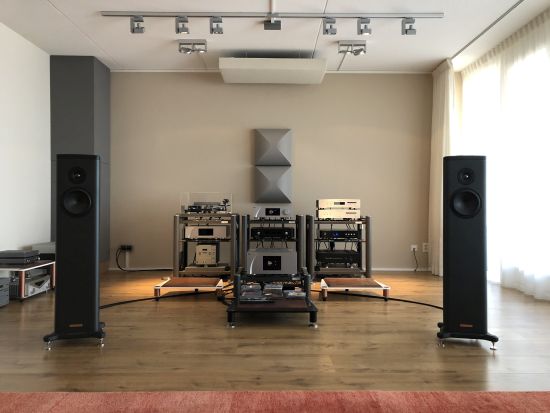
In early 2020, the Broadcast Facility company where I had worked for over 20 years went bankrupt, and suddenly, I was unemployed. This meant severe cost-cutting, and one of my most significant costs besides rent was for the bank loan that I used to purchase my equipment. With trepidation and regret, but also knowing it was the best decision, I chose to sell some of my equipment, including the Kromas, Magico S3, and more, to allocate the funds to pay off my debts. This must have been the most unsatisfying bank transfer that I ever made. It left me free of debt but also without any wiggle room.
A long and frustrating period ensued of trying to find work, first in the same field and later in ever-larger circles. This also marked the start of a period that would prove very important for my personal development and provided insights into the acoustics of my living room. Since I had no more money to spend on equipment, I elected to focus on the room itself. And, honestly, it was about time!
With the help of four RTFS Big Block bass absorbers and careful positioning of the system, speakers, and listening position, I achieved a good sound balance, and I was (and still am) very happy with the S1 MkIIs. However, as I know now, the room acoustics were still far from perfect.
Over the years, my listening position has changed countless times. But in a final effort to ensure my system was oriented in the most optimal position, I moved the speakers and listening position around the room in all four logical positions and even tried it diagonally.
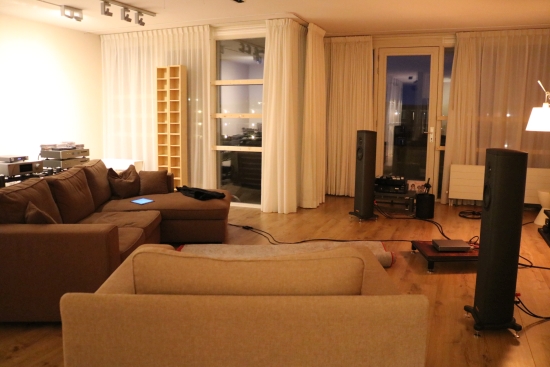
Following the strong recommendation of friend and fellow writer Werner Ero, I tried Master CC speakers. Rick Paap of Dynamic Solutions delivered them in person, after which he spent quite some time optimizing the positions. As he found, there was an imbalance between the two channels that prohibited a visually symmetrical setup.
More importantly, he was precisely the right person at precisely the right time to visit me. While the CCs did many things beautifully, they were not the ideal speakers for me.
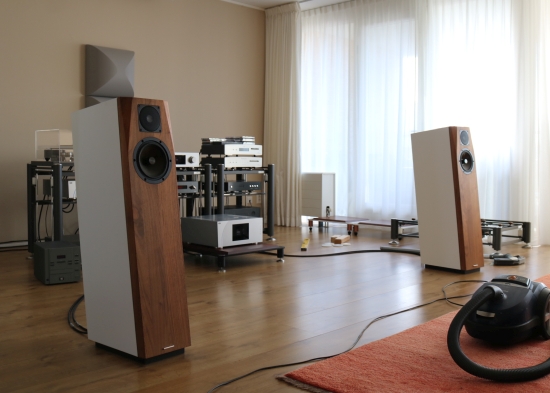
When I told Rick about my troublesome acoustics and how the issues were minimized with dipoles and closed-cabinet speakers, within two minutes, he stood up, walked to the left front wall, and started banging it. “This right here is your problem,” he said.
Just like that, Rick identified the biggest culprit in my room: a large hollow resonance in the left-hand wall adjacent to the bathroom. I still don’t know how that escaped my attention all these years… As Rick pointed out, this was the primary source responsible for muddying the bass in that corner and a significant reason why I had to position my speakers so far forward to obtain a linear balance.
His first suggestion was to place two doors loosely against the wall to absorb and convert some of the pressure and prevent it from reaching the wall behind. To my delight, this really worked, which led to the decision to place my CD racks against this wall, but following Rick’s advice, at a small distance so that the racks do not touch the wall.
Further extending on Rick’s advice, I started knocking on all surfaces to find resonances, and I found many! What would begin soon is an extended period of room acoustics optimization.
First, many more CD racks would follow. As these exact rack models are no longer available (the current Gnedby racks have deviating shelf spacing), I retrieved them secondhand from all over the country. In addition, I had to source large amounts of CDs to fill the racks. Fortunately, everyone is getting rid of their CDs so that I could pick them up in large quantities at a time for relatively peanuts.
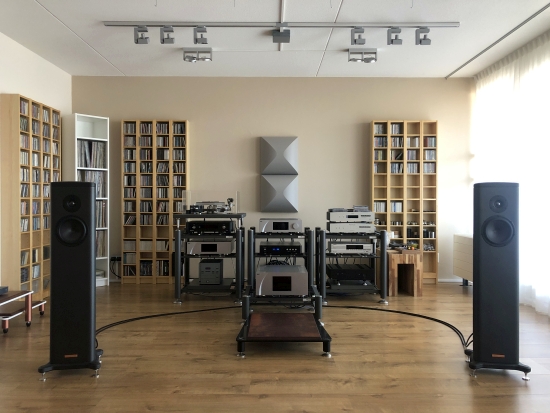
In the left corner, I experimented with RTFS Big Blocks and cabinets filled with books and found the latter provided a better balance for this space. The bookcase reduced the room mode in that corner but did not dull the sound as much as any foam-based bass traps I tried. After the successful first test, of course, the corner cabinet needed to be in the same beech wood finish as the CD racks. Alas, that color was long phased out at Ikea so I had to resort to the second-hand market once again. Weeks and months passed and I just could not source the deep version of this Billy cabinet, which I needed to store my LPs in. So, in the end I just purchased a shallow version and extended it. It looks silly from the outside, but you hardly notice it from within, let alone when it is filled with LPs. Those stacks of LPs, by the way, turned out to be excellent at reducing corner-induced room modes.
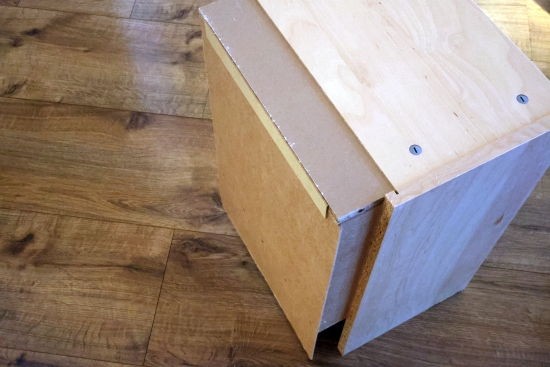
Next was the right-hand corner. Of course, everything has to be symmetrical for me. This introduced another challenge as that corner holds one of only two heat radiators in this room. So, removing it was not an option. The solution was to make a structure on the wall using a steel beam-enforced wood structure from which the cabinets could be suspended.
Further extending on Rick’s advice, I proceeded to place doors in all suspected problem areas.
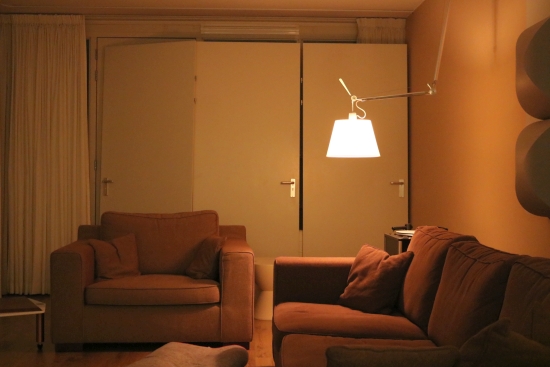
Sure enough: the rear back right-hand corner proved to be a huge offender and a prime candidate for placing a stack of RTFS Big Blocks.
Meanwhile, using Rick’s “knocking” method, I also found that all the glass windows had low resonance modes that lingered on long and interfered with the right speaker.
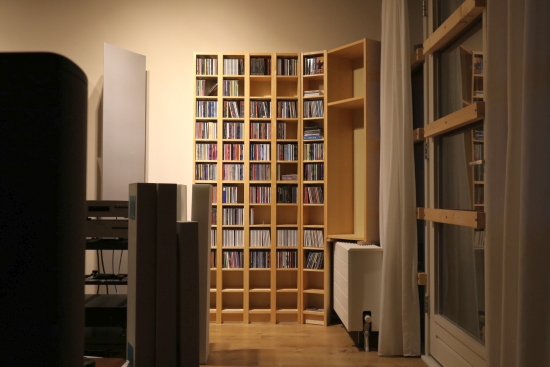
The effect of this was a muddying of the bass, but more importantly, a cancellation of much of that speaker’s bass output. The way I combatted this was by screwing lumber bars across the windows and applying a little force in the middle to dampen them. This worked superbly well so I resorted to treating all windows this way. Instead of applying force, I glued hardwood struts on the windows that, in turn, screwed into larger-diameter lumber screwed across and affixed to the window frames.
Of course, I was not going to store LPs on top of a heat radiator, so I relocated some of the audio magazines from the other room to the newly made corner cabinet.
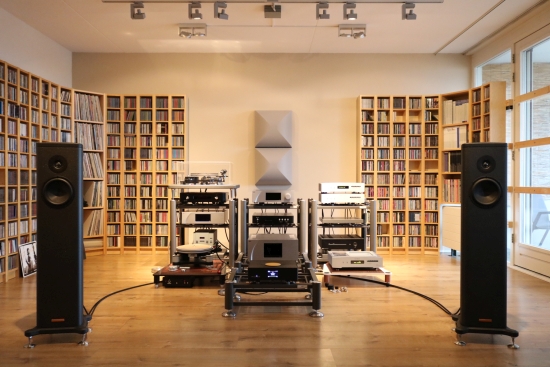
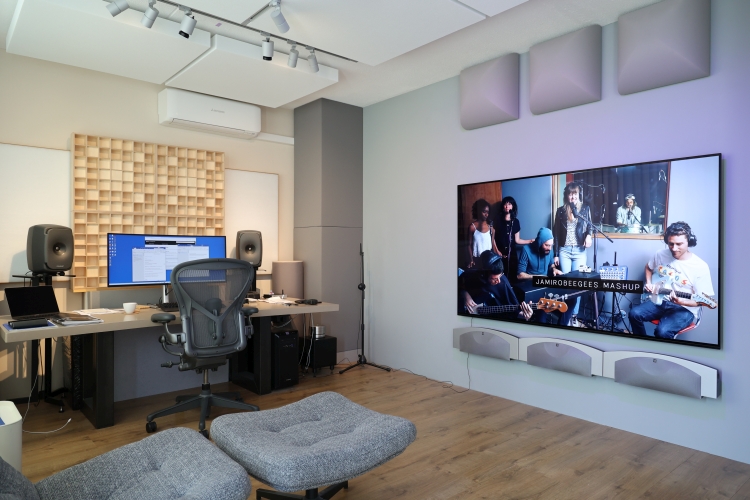
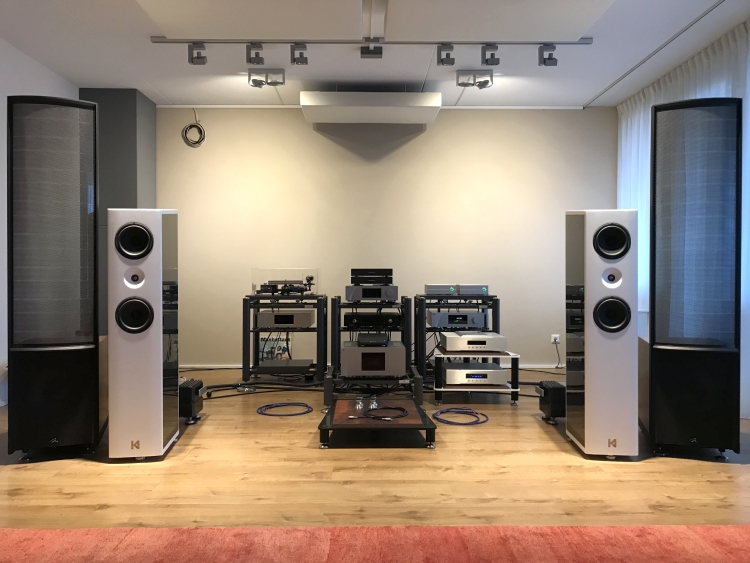
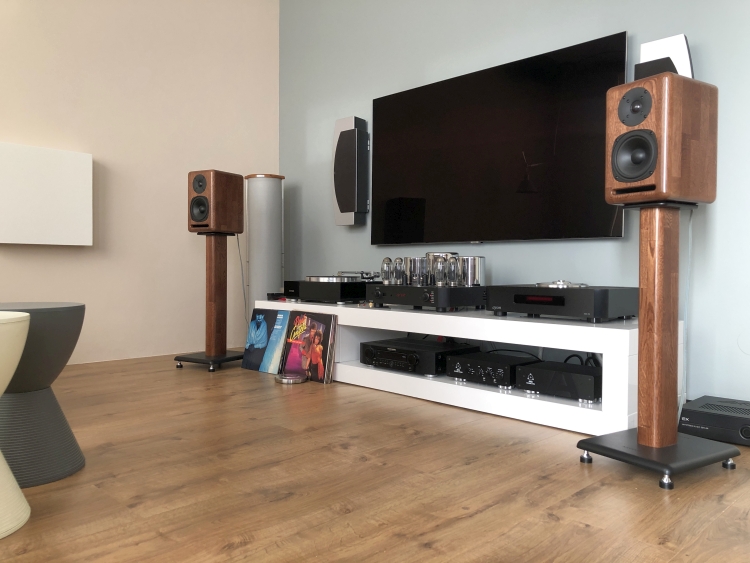
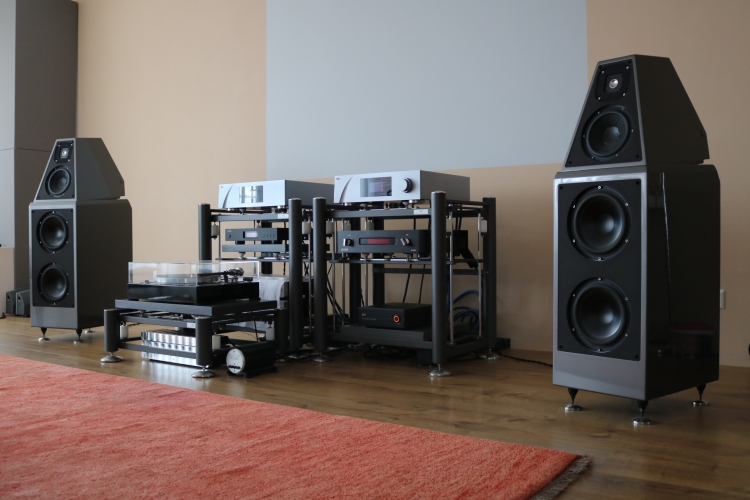
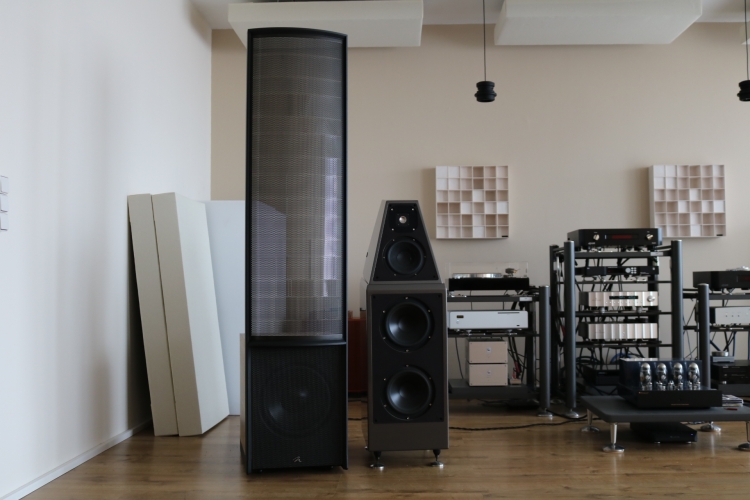
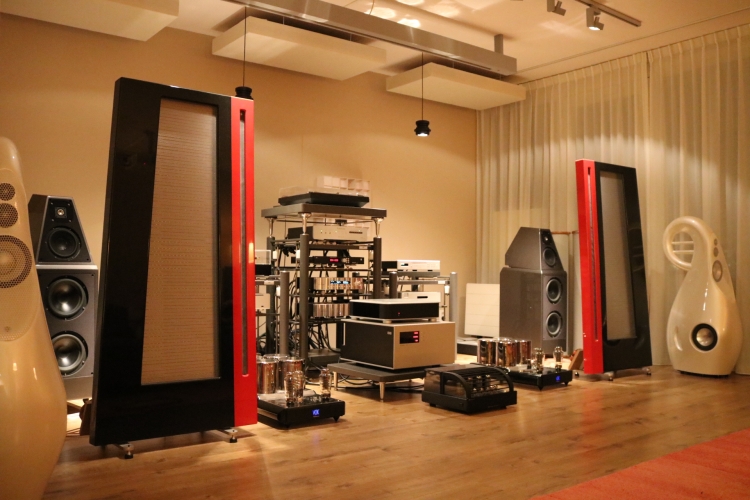
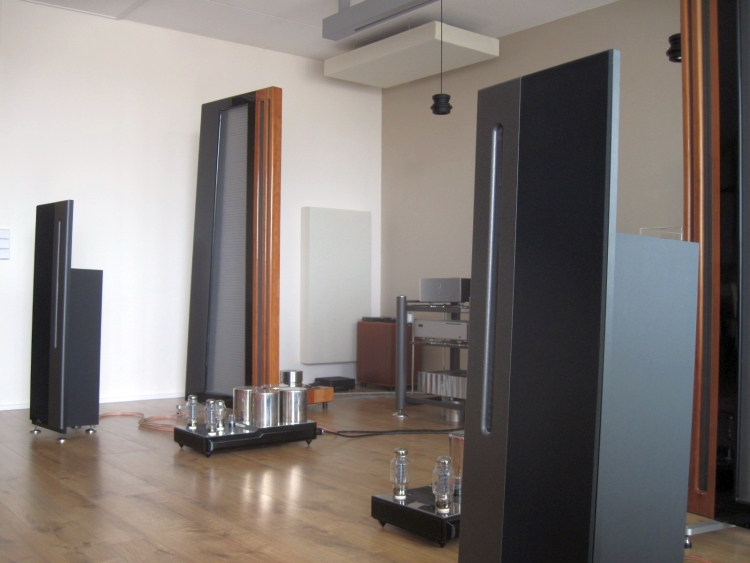
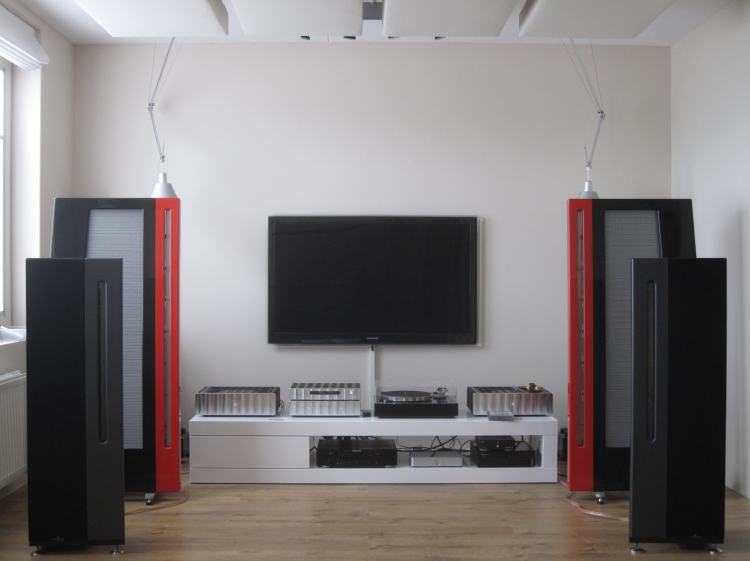
Damn interesting Christiaan. Specially so, because fate turned against us and we got our house on fire. Literally. So my listening room got lost ans all devices in it. To give you an idea: Mola Mola KUla, Grimm MU1, REL Carbon special and Diptyque DP-160’s and of course some quality electronics, cables, acoustic measures and the like.
We temporally live in another house. Recovery will take months , perhaps even a year.,
Means that I have start from scratch. Having learned a lot the past few years concerning acoustics, synergy of components. So I could do with some advice on the different aspects. Starting with working on the acoustic quality of the room. It soon will be stripped so that the bare walls of what once was a garage (later extended a bit) will be visible and form the start.
My question: where/how to start? Acoustics, components , pitfalls and tips …anything.
I’d be most grateful!
Greetz,
Henk (Venlo)
Hi Henk, nice to hear you find it interesting! Alas, these things are so hard to predict and so utterly situation-dependent that I can’t provide much in the way of meaningful tips beyond what I mentioned in this report and other articles on this site. But one general rule (although not sacred) is that it is good to strive for left/right symmetry. Left/Right walls should ideally be identical in terms of material and objects. So, ideally two hard walls. If you have one hard wall and one glass area (as I have), you’re going to be in for a lot of trouble. Square rooms are also to be avoided as the main single resonance mode will overrule and be very hard, if not impossible, to cure. Other than this, I’m afraid it is a matter of trial and error. Of course, I am no acoustical expert, and you might get better input from people who studied for this.
Thanks Christiaan, perhaps a good idea tot first contact an acoustician
Have a great summer!
Henk